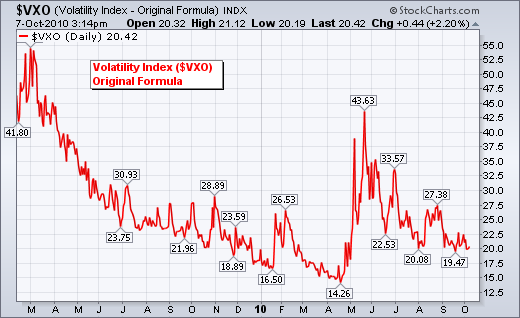Volatility Index VIX What is it and How Does It Work
Post on: 24 Сентябрь, 2015 No Comment

The Volatility Index (VIX) is a tool used by contrarian traders to identify when market sentiment is complacent or optimistic. Contrarian investors trade against the market trends as opposed to trading according to the momentum of the market.
Volatility Index VIX: What is it and How Does It Work?
The Chicago Board Options Exchange (CBOE) collects daily data to arrive at the global volatility index. The index itself is based on the prices of options in the S&P 500 index. The S&P 500 index comprises the top 500 stocks on the market. Note that the CBOE does not set the VIX; instead, it only collects data based on the millions of transactions conducted by traders globally.
What the VIX really seeks to identify is the implied volatility of the option on which the S&P index is based. It is important to note that the VIX is only an indicator of the implied and not the actual volatility of the market. In other words, it is just an indication of the premiums that traders are looking to invest to be able to buy or sell stock assets.
The VIX is not necessarily an indicator that investors believe the market will fall, but merely that it will move in one direction or another. The higher the index, the bigger the expected movement in the S&P. The VIX is calculated as the expected movement in the S&P 500 over the next 30 days, assuming a 68% likelihood or one standard deviation. which is then annualised.
When investors are not spending too much to buy stocks, the VIX declines and when the investors are willing to spend more premiums, the VIX climbs. Therefore, when there are more buyers on the market, the premiums shoot up and when there are more sellers, the premiums decline. The VIX is fundamentally an average of the prices of the S&P 500 index. This number offers a general picture of whether traders are paying more or less premiums to buy or sell the top 500 stocks in the market.
How do you tell if the premiums are high or low using the VIX?
Generally, a volatility measurement that is less than 20 is an indication of a stable market with low risk. Anything lower than 20 is an indication of a bullish market meaning that the number of sellers is way much higher than that of buyers. This causes the stock prices to decline.
At the same time, a volatility index that’s higher than 20 is an indication of a bearish. high risk environment. In this case, there are more buyers than there are sellers, causing the stock prices to climb up too high.
A good example is the 2008-2009 global financial crisis that saw the VIX go as high as 50. Given that this is not a sustainable volatility level, the index came back down tumbling lower than 15. This was obviously a very tumultuous time for investors.
What causes the VIX to fluctuate?
As we have pointed out above, the average or historical volatility index is at about 20, give or take. But, factors such as social, political and economic dynamics often cause the VIX to shift from its mean average.
While there are other factors to taking into account, in most cases, a high VIX reflects increased investor fear and a low VIX suggests complacency. Historically, this pattern in the relationship between the VIX and the behavior of the stock market, has repeated itself in bull and bear cycles.
It is worthwhile noting that the VIX is not an absolute and flawless indicator of market sentiment . It is common for the index to remain low even when the markets are clearly unstable and very volatile. To have a wholesome understanding of the prevailing market sentiments and to identify potential reversals, it is best to use the VIX together with other market sentiment indicators.
Conclusion
The VIX works well in conjunction with other overall market indicators. By taking into account this index, traders will have a better understanding of investor sentiment, and thus possible reversals in the market.














